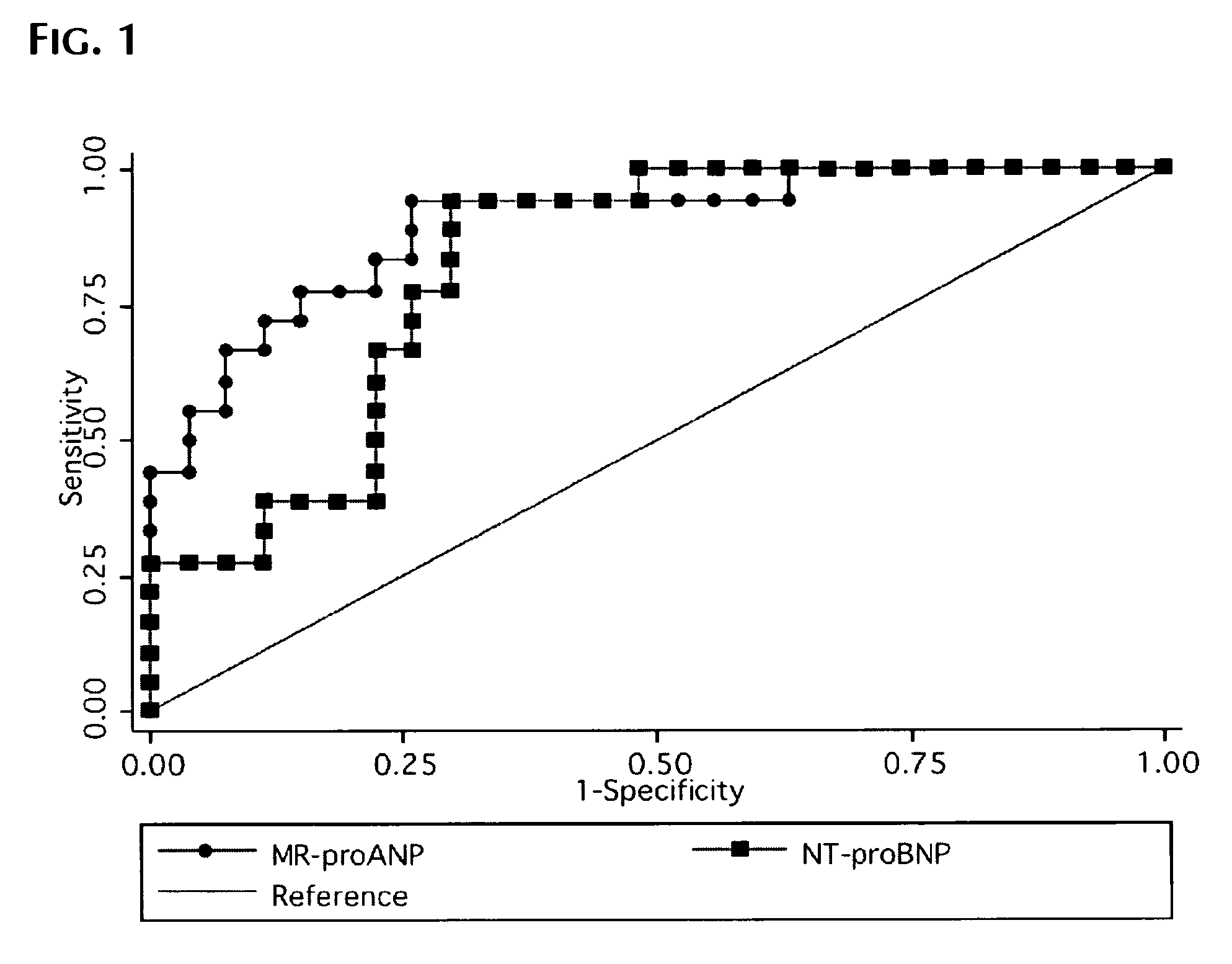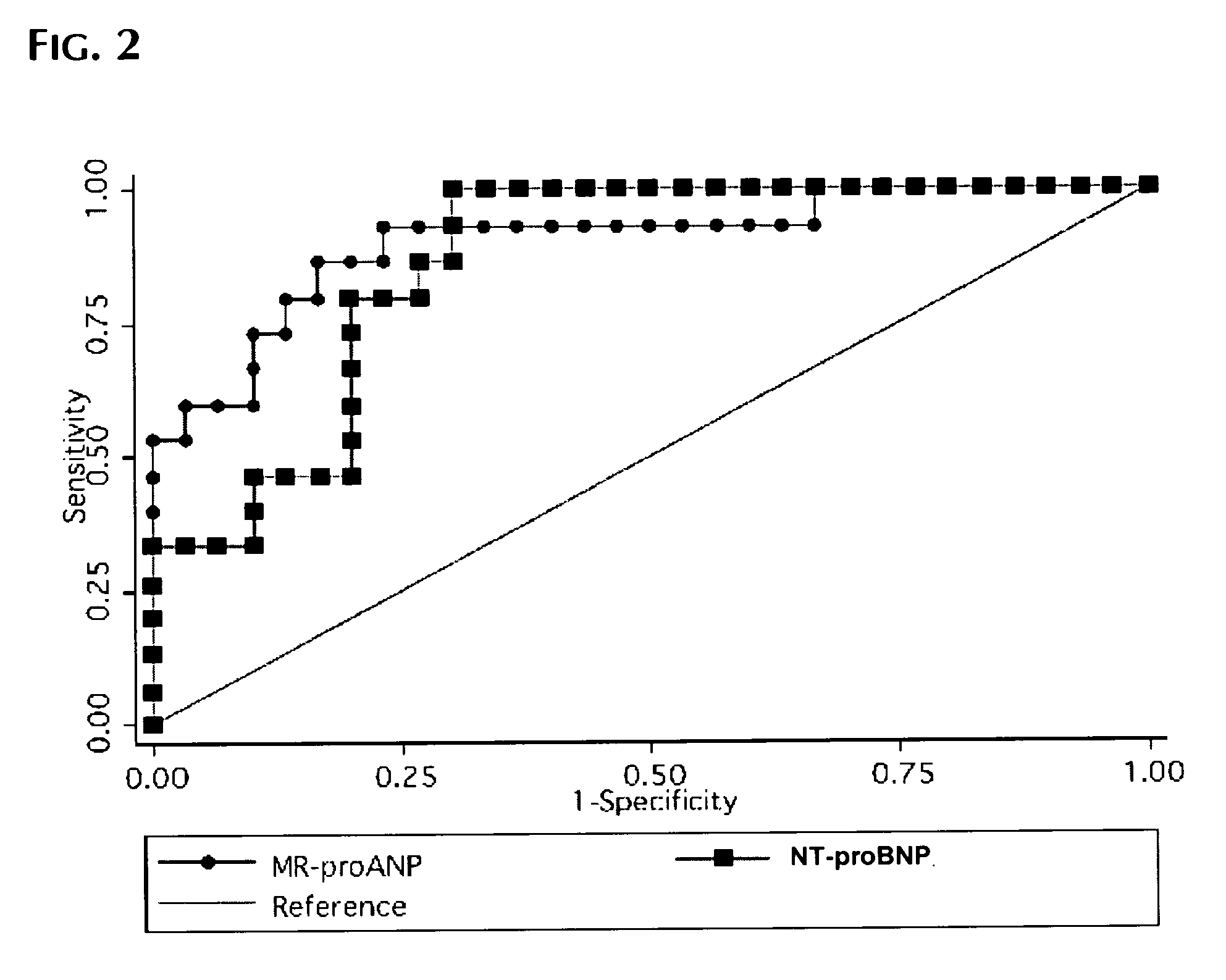[0021]Various antiarrhythmic agents can be used to return the heart to normal sinus rhythm. Pharmacological cardioversion is an especially good option in patients with fibrillation of recent onset. Drugs that are effective at maintaining normal rhythm after electric cardioversion, can also be used for pharmacological cardioversion. Drugs like amiodarone, diltiazem, verapamil and metoprolol are frequently given before cardioversion to decrease the heart rate, stabilize the patient and increase the chance that card ioversion is successful. There are two classes of agents that are most effective for pharmacological cardioversion. Class I agents are sodium (Na) channel blockers (which slow conduction by blocking the Na+ channel) and are divided into 3 subclasses a, b and c: Class Ia slows phase 0 depolarization in the ventricles and increases the absolute refractory period. Procainamide, quinidine and disopyramide are Class Ia agents. Class Ib drugs shorten phase 3 repolarization. They include lidocaine, mexiletine and phenyloin and finally class Ic drugs greatly slow phase 0 depolarization in the ventricles (however unlike 1a have no effect on the refractory period). Flecamide, moricizine and propafenone are Class Ic agents. Class II agents are beta blockers which inhibit SA and AV node depolarization and slow heart rate. They also decrease cardiac oxygen demand and can prevent cardiac remodeling. Not all beta blockers are the same, some are cardio selective (affecting only beta 1 receptors), others are non-selective (affecting beta 1 and 2 receptors). Beta blockers that target the beta-1 receptor are called cardio selective because beta-1 is responsible for increasing heart rate; hence a beta blocker will slow the heart rate. Class III agents prolong the repolarization by blocking outward K+ current. Amiodarone and sotalol are effective Class III agents. Ibutilide is another Class III agent but has a different mechanism of action (acts to promote influx of sodium through slow-sodium channels). It has been shown to be effective in acute cardioversion of recent-onset atrial fibrillation and atrial flutter. Class IV drugs are calcium (Ca) channel blockers. They work by inhibiting the action potential of the SA and AV nodes.
[0024]An anticoagulant is a substance that prevents coagulation; that is, it stops blood from clotting. A group of pharmaceuticals called anticoagulants can be used in vivo as a medication for thrombotic disorders. Oral anticoagulants include coumarins (vitamin K antagonists), e.g. warfarin acenocoumarol and phenprocoumon or phenindione. The anticoagulant heparin can be used by injection. Heparin and its low molecular weight derivatives (e.g. enoxaparin, dalteparin, tinzaparin) are effective at preventing deep vein thromboses and pulmonary embolism in patients at risk by preventing the formation of clots and extension of existing clots within the blood. Another type of anticoagulant is the direct thrombin inhibitor. Current members of this class include argatroban, lepirudin, bivalirudin, and dabigatran.
[0032]It is also possible and may improve the reliability of the results to determine one or more biomarkers in addition to proANP or fragments thereof, especially biomarkers related to atrial fibrillation or cardiovascular diseases in general. Preferred examples of such additional biomarkers are pro-BNP and fragments thereof, particularly NT-proBNP and / or BNP. Reference in this regard can be made to WO 2008 / 077396 A1 and WO 2008 / 106938 A2, which are incorporated herein by reference.
[0038]In a particularly preferred embodiment the assay comprises two capture molecules, preferably antibodies which are both present as dispersions in a liquid reaction mixture, wherein a first labeling component is attached to the first capture molecule, wherein said first labeling component is part of a labeling system based on fluorescence- or chemiluminescence-quenching or amplification, and a second labeling component of said marking system is attached to the second capture molecule, so that upon binding of both capture molecules to the analyte a measurable signal is generated that allows for the detection of the formed sandwich complexes in the solution comprising the sample.
[0050]Other preferred cut-off values are for instance the 90th, 95th or 99th percentile of a normal population. By using a higher percentile than the 75th percentile, one reduces the number of false positive subjects identified, but one might miss to identify subjects, who are at moderate, albeit still increased risk. Thus, one might adopt the cut-off value depending on whether it is considered more appropriate to identify most of the subjects at risk at the expense of also identifying “false positives”, or whether it is considered more appropriate to identify mainly the subjects at high risk at the expense of missing several subjects at moderate risk.
 Login to View More
Login to View More 

